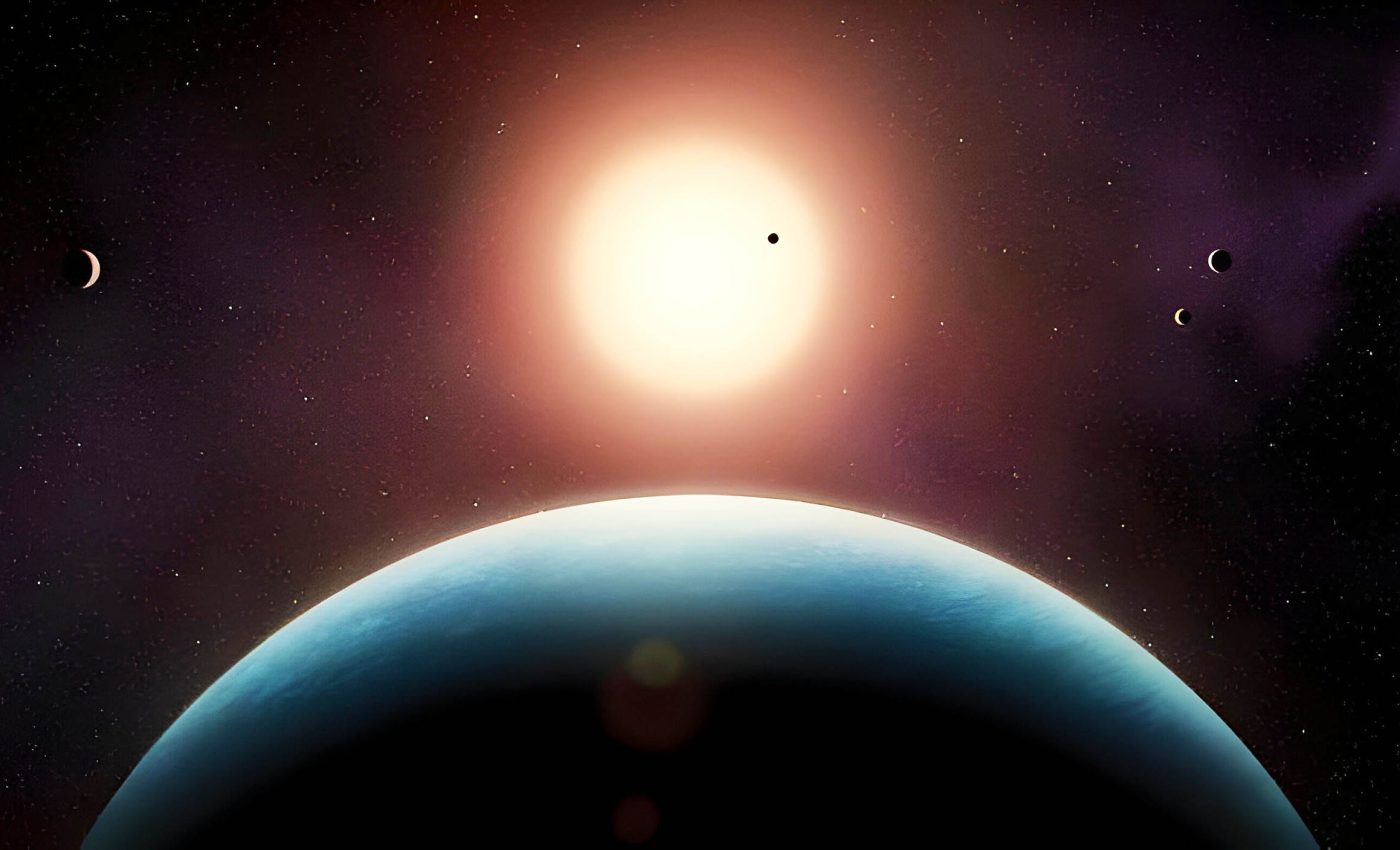
Star system found just 35 light-years away has five planets, all are in the "goldilocks" zone
Just 35 light-years away, a small red dwarf star is turning heads. This unassuming star, named L 98-59, is in the center of one of the most closely examined planetary systems to date.
The reason? Because this star has at least five planets that fall in the habitable “goldilocks” zone, where conditions could allow liquid water to exist.
Scientists from the Trottier Institute for Research on Exoplanets (IREx) and the Université de Montréal have now mapped the L 98-59 system with record precision.
The findings confirm a fifth planet in the habitable zone of this nearby red dwarf star. This planetary system now provides a promising location to explore conditions suitable for life.
Understanding the “goldilocks” zone
The “Goldilocks zone” is a sweet spot in space – not too hot, not too cold – where conditions are just right for liquid water to exist on a planet’s surface.
Astronomers call it the “habitable zone,” but the nickname sticks because it captures the balance perfectly, like the fairy tale porridge.
It’s a region around a star where a planet could maintain water without it instantly evaporating or freezing solid.
Since water is essential for life as we know it, finding planets in this zone gets scientists excited about the possibility of life beyond Earth.
But the Goldilocks zone isn’t a guarantee of habitability – it’s just one piece of a much bigger puzzle.
A planet also needs an atmosphere, the right chemical makeup, protection from radiation, and geological stability. Even Earth needed billions of years of luck and evolution to become what it is today.
Star system L 98-59
L 98-59 is a small red dwarf star hosting three planets discovered by NASA’s TESS mission in 2019. A fourth was later found using the ESPRESSO spectrograph.
These four planets orbit their star at distances that are much closer than Mercury is to the Sun.
“These new results paint the most complete picture we’ve ever had of the fascinating L 98-59 system. It’s a powerful demonstration of what we can achieve by combining data from space telescopes and high-precision instruments on Earth,” noted Charles Cadieux, lead researcher at IREx.
The research also provides scientists with key targets for future atmospheric studies using the James Webb Space Telescope [JWST],
Hot, watery, and habitable
The team analyzed a large archive of ground and space-based data. They determined the masses and sizes of the planets with high accuracy.
L 98-59 b, the innermost planet, is a sub-Earth – it is around 84% of Earth’s size and half its mass.
The two closest planets might host volcanic activity due to tidal heating, similar to Jupiter’s moon Io.
The third planet stands out as a potential “water world,” with its low density suggesting a deep, water-rich composition. The nearly circular orbits of these planets improve their suitability for detailed atmospheric study.
“With its diversity of rocky worlds and range of planetary compositions, L 98-59 offers a unique laboratory to address some of the field’s most pressing questions,” said René Doyon, co-author and director of IREx.
“These questions include the following: What are super-Earths and sub-Neptunes made of? Do planets form differently around small stars? Can rocky planets around red dwarfs retain atmospheres over time?”
Fifth planet found at L 98-59
One of the study’s highlights is the confirmation of L 98-59 f, a non-transiting fifth planet. Its presence came to light through precise radial velocity readings from HARPS and ESPRESSO.
This planet is particularly interesting because it receives about the same energy from its star as Earth does from the Sun.
“Finding a temperate planet in such a compact system makes this discovery particularly exciting. It highlights the remarkable diversity of exoplanetary systems and strengthens the case for studying potentially habitable worlds around low-mass stars,” Cadieux said.
Old data and new planets
Instead of scheduling new observations, the team used existing data from TESS, HARPS, ESPRESSO, and JWST.
They applied advanced techniques developed at IREx, including a line-by-line radial velocity method and a new temperature indicator.
These tools allowed them to filter out noise from stellar activity. Combining this with transit data from JWST, the team improved planet size and mass estimates by twofold.
“We developed these techniques to unlock this kind of hidden potential in archival data. It also highlights how improving analysis tools allow us to improve upon previous discoveries with data that is just waiting to be revisited,” said study co-author Étienne Artigau.
What’s next for L 98-59
L 98-59 now stands as one of the most promising systems near Earth for studying rocky planets. Its varied compositions and close orbits around a small star make it an ideal candidate for atmospheric studies with JWST.
The IREx team has already begun follow-up observations. L 98-59 could soon join systems like TRAPPIST-1 as a key player in exoplanet research.
“With these new results, L 98-59 joins the select group of nearby, compact planetary systems that we hope to understand in greater detail over the coming years,” concluded study co-author Alexandrine L’Heureux.
“It’s exciting to see it stand alongside systems like TRAPPIST-1 in our quest to unlock the nature and formation of small planets orbiting red dwarf stars.”
—–
The study is published in The Astronomical Journal.
Image Credit: Benoit Gougeon, Université de Montréal
—–
Like what you read? Subscribe to our newsletter for engaging articles, exclusive content, and the latest updates.
Check us out on EarthSnap, a free app brought to you by Eric Ralls and Earth.com.
—–













